Escalation of commitment it is. I knew I was late in updating the blog. Since I wanted to update with a huge post, I delayed it even further. And now, in retrospection, it’s really been a long time since an update was made. Anyway, better late than never!
About the trip: Ask anyone who's seen and experienced snow for the first time, and he’ll tell you that it’s an entirely different experience. Not that people and things are different there, but the whole experience of wearing clothing worth kilograms, searching for some strip of cloth to cover the inch of body that remains exposed to icy winds, depending entirely on a twig to get a grip of the snow during a steep climb uphill over one feet of slimy slippery snow, and most importantly, worrying whether the sun caressed South Indian bodies have the inherent capabilities to withstand sub-zero temperatures... is inexplicable! For the sake of record, we were approx. 100 Km short of the world’s highest motorable road, and 150 Km short of the world’s highest motorable village – Kibber. But yes, we did make it to the world’s highest cricket ground. There were a lot of fun filled moments, and there was an equal share of nail-biting moments too...
Our journey…
1)
The first move: Indore to Delhi in train. Once in Delhi, we shifted to a bus to Chandigarh; Overnight stay in Chandigarh.
2)
The drive: We took an Indica from Chandigarh and traveled direct to Manali. The route took us through Mandi, several cute looking temples, the breathtaking Beas valley, and Kullu. Snowcapped peaks were visible all along, increasing the expectations multifold.
3)
The stay: For three days, we stayed in the SASE (Snow and Avalanche Study Establishment) quarters near Manali. The quarters were surrounded by snowcapped hills on all sides, with the Beas River running by the side. It had snowed in the campus the day before we arrived, which was evident from the uncleared snow around. Within the campus, it was real cold – the likes of 2 to 6 degrees all the time.
4)
The ascent: We traveled to the Solang valley the very first day. We were told that that was the best time to make it since the road would be closed if it snows later. We reached Solang without hiccups, picking up all the snow and ski gear en route. As we traveled higher and higher, the concentration of snow increased multifold and the valleys down had snow, giving us a feeling that were really on top.
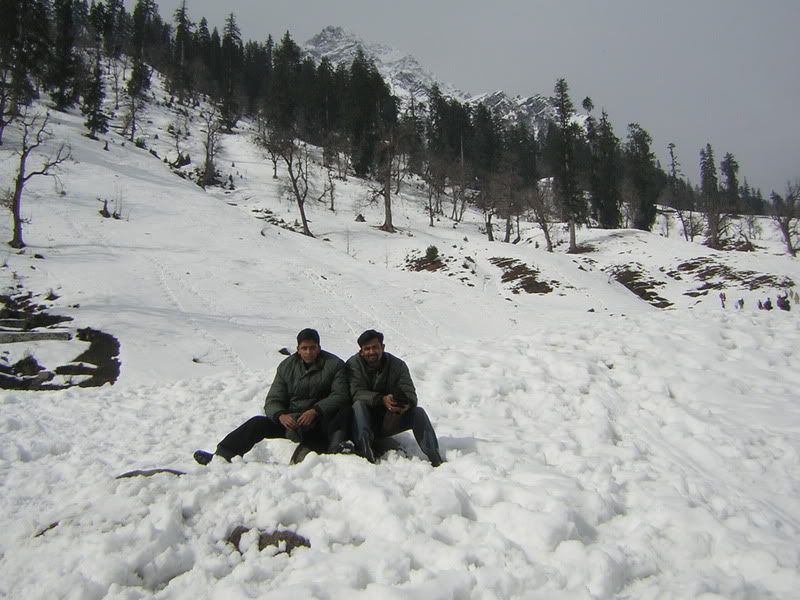
5)
First touch: Once in Solang, we started to Ski in the snow front. Contrary to what I thought, skiing on plain surface was an extremely difficult task. You gotta push the whole of the body using the rods, which required a lot of stamina. I was over-excited and skied for reasonably long distances by exerting all the energy I had. I fell down some 4/5 times, and felt cold snow inside my fingers and inside the shoes. The gloves and the shoes that we took on rent had holes in them. In a matter of 30 minutes, the temperature fell down to minus 4/5 degrees and it started snowing heavily. Suddenly, at one point of time, I felt really cold and completely lost - sans en. It took some 5-10 minutes for me to recover. The same happened with Arvind. That’s when we learned that energy exertion should happen slowly, particularly at high altitudes where oxygen levels are less. All of us felt bitter cold, and all we wanted to do was to get out of the place. That’s when things looked ominous.
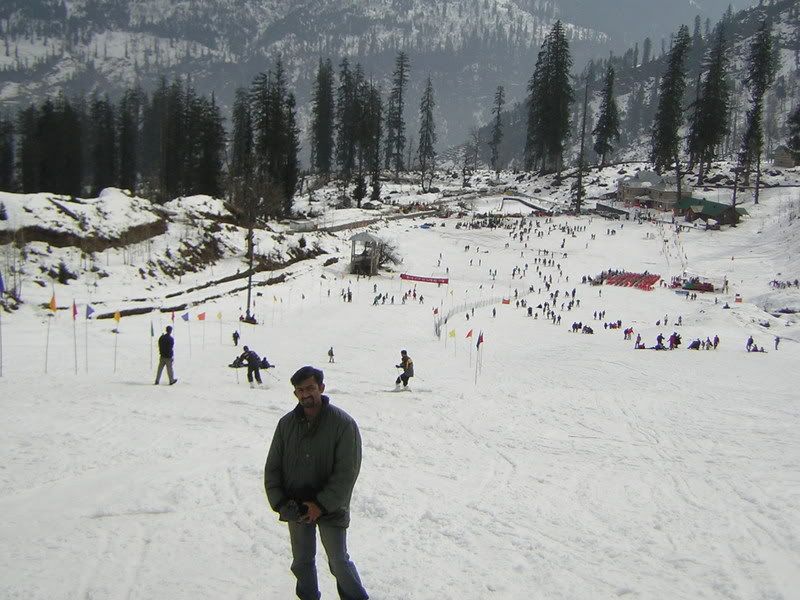
6)
Living on the edge: We did a bad mistake by taking our Indica right to the very top, through the narrow, slimy roads. After it started snowing heavily, the roads were covered with snow. Our Indica was certainly not the car for that kind of a terrain, and even by moving at 5 Kmph in the first gear, the car started to lose control. The safe roads were 10 Kms downhill, and there was a multitude of precarious bends en route. The trick was to drive without applying brakes. Apply the brakes; we all could become history! Somehow, despite skidding many a times, our driver slowly made it to the safe roads. It took half an hour for us to travel 5 kms to reach safe roads. Thus ended the eventful first day.
7)
Loitering around: On the second day, we made it to Vashist hot springs, the Tibetan market, the Tibetan monasteries and the Hidamba temple (which was from where Arvindswamy gets kidnapped in the cult movie “Roja”). In the afternoon, we traveled a long distance to a place called Naggar. Naggar is known for apple orchards, the altitude and a Himalayan museum. The museum was deserted as it was a Sunday, and we instead visited an old castle that was precariously perched at a high altitude. The highlight of the castle was its carvings and the breathtaking view of the Beas valley it provides.
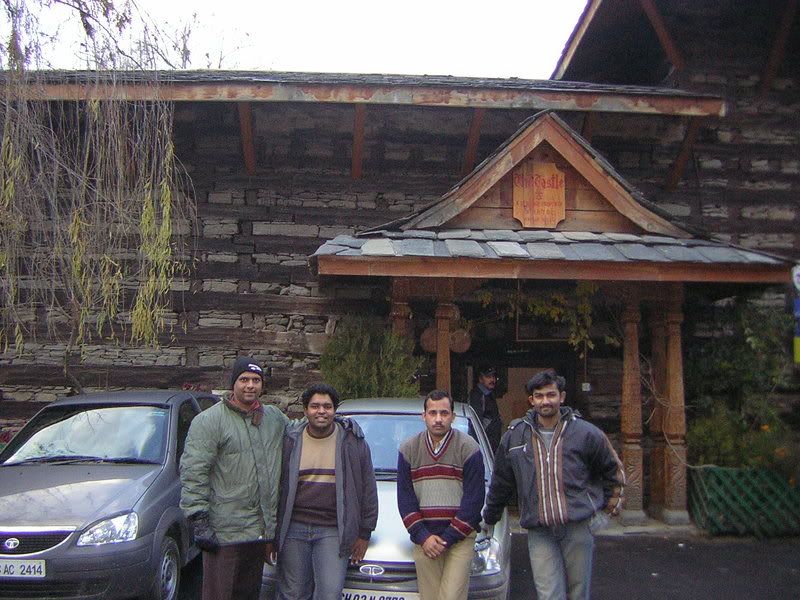
8)
Snow again: The third day was spent again in Solang. It wasn’t snowing this time around, and all of us went with our own jackets, sans ski uniforms. I and Arvind scaled the ski slopes to reach the very top of the ski front. The view was amazing – full snow, specks of people with colorful jackets moving down under in pure white snow, cone trees with snow scatters etc. In the afternoon, we crossed half way into the icy waters of the Beas River.
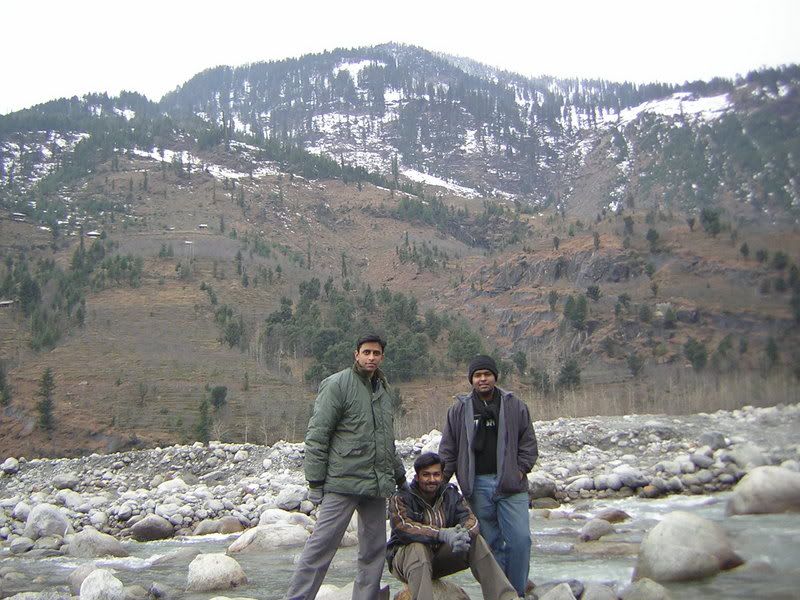
9)
The religious voyage: The next day, we started to Shimla. En route, we made it to Manikaran, which has an 11000 thousand year history. Manikaran is supposed to be the place where Lord Shiva meditated for a long time near the hot springs and the cold Parvati River. The springs were 88-90 c hot. You could even cook rice and dal at that temperature!
10)
Shimla: Shimla gave us one of the coldest nights in the whole trip. We did a night stroll around The Mall, Shimla, which is supposed to the most ‘happening’ place. We really enjoyed the hot snacks, the hpmc night outlet, the cold ambience, the crowd and the lightings.
11)
Junk food rocks!: The next morning, we started to a place called Kufri. En route, we went to a temple called ‘Joka temple’. The temple is at about 1 Km high over Shimla, and the ascent of the roads leading to the temple prevents most vehicles from reaching it. We had to walk the whole distance since our Indica couldn’t scale the ascent. I bet we would’ve lost a KG or two in the climb! Such was the slope and the length – 750 m uphill. Apart from the worship, the hot tasty Bajji served made the climb a worthwhile one.
12) We decided to skip Kufri since we had already experienced snow. Instead, we made it to a cricket ground that was at 2500 m high, which was supposed to be the world’s highest cricket ground. Apart from the flaunt-value, that specific travel didn’t provide anything else.
13) Chandigarh was next, and we made sure that we stayed a day there to experience what is one of the world’s earliest two fully planned cities. We were all spell-bounded by the planning and the infrastructure. Despite critics’ claims that planned cities are failures, Chandigarh was buzzing with all the flavors of India. The lake, the market, the world’s only rock garden, the road side chat shops, junk food outlets, vintage Sardars with cute colorful turbans, the ice cream wala who started a skirmish after providing six months' old ice creams, were all delights. It would easily be any Indian’s dream city – except for some elements like human rickshaws that were still in operation. While most of these rickshaws have been eradicated down South, it was disheartening to see the menial divide extant in the form of rickshaws in these parts of India. Hope rickshaws get out of action soon!
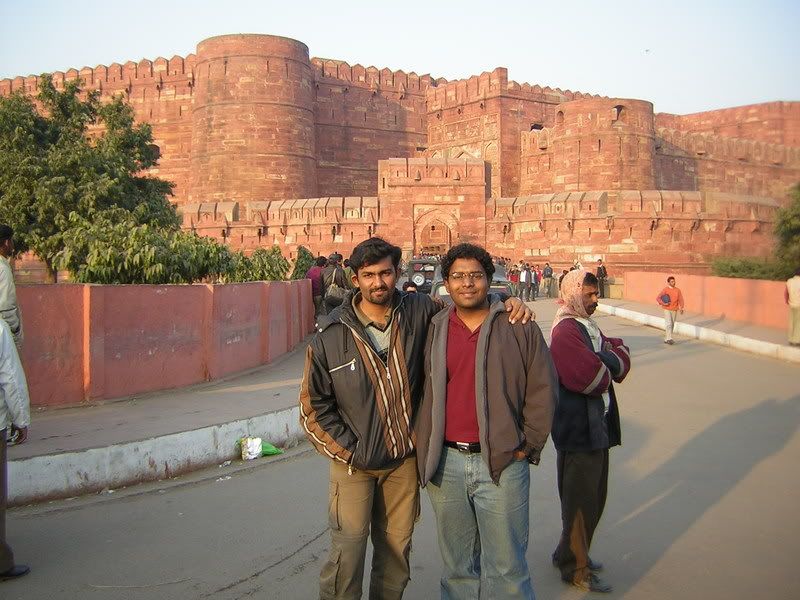
14)
Agra: The last visit was to the famous ancient city Agra. We visited Sikandra, the Agra Fort, Buland Darwaza and the Fatehpur Sikri. Due to a planning goof up, we managed to see Taj only from across the River Yamuna. Taj was closed on Fridays, and most of Agraites were unaware of that fact! Must say here that a yet another visit to Agra beckons!
15) Last, completed the tour by taking a bus from Agra to Indore.
It’s needless to mention that this was a trip that would definitely stay in memory for a long time. We had a lot of people telling us that winter in Himachal would be miserable. But I could vouch that proper clothing alone would make the tour a delicacy. I would even go to the extent of arguing that winter is the best time to visit Manali, just because of the fact that snow is something that is really at a premium. It’s simply worth it. With so-called doomsayers' warnings about global warming et all, you never know!






